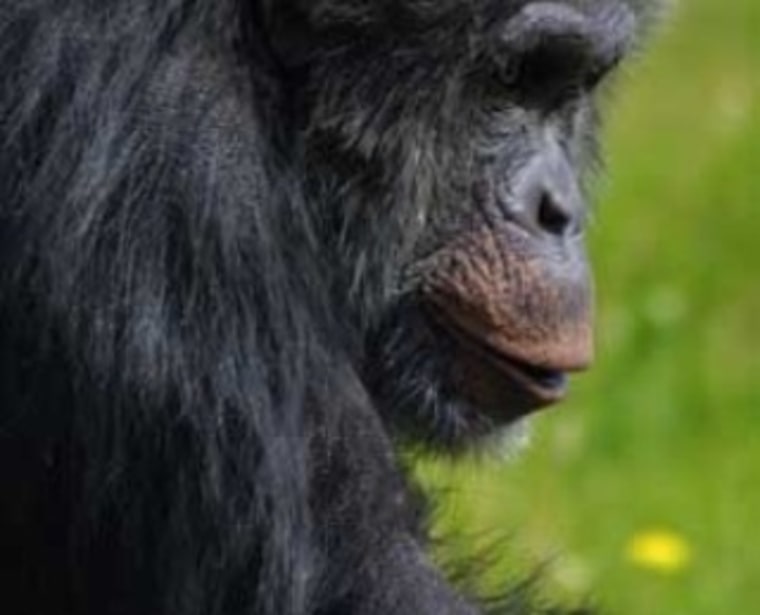"Santino," a male chimpanzee at Furuvik Zoo in Sweden, is devising increasingly complex attacks against zoo visitors.
At first Santino was famous for throwing rocks and other projectiles at visitors who annoyed him. Now he has improved his technique, which requires spontaneous innovation for future deception. Researcher Mathias Osvath, lead author of a paper about Santino in PLoS ONE, explained what the clever chimp did:
"After a visitor group had left the compound area, Santino went inside the enclosure and brought a good-sized heap of hay that he placed near the visitor's section, and immediately after that he put stones under it," Osvath said.
PHOTOS: How Santino Attacks Visitors
"He also appeared to have placed projectiles behind, just before he went in after the hay. After this, he sat down beside the hay and waited. When the visitors came back, he waited until they were close by and, without any preceding display, he threw stones at the crowd."
Osvath, who is the scientific director of the Lund University Primate Research Station Furuvik, and colleague Elin Karvonen noticed the behavior while studying the elderly chimp, who is the dominant male in his exhibit at the Swedish zoo.
The calculated surprise attacks on visitors demonstrate very advanced thinking usually only associated with humans.
Osvath said, "What is interesting is that he made these preparations when the visitors were out of sight, and also that he incorporated innovations into the behavior."
"What makes this a bit special is that he actually had not experienced before what he seemed to anticipate," Osvath added. "He, in a sense, produced a future outcome instead of just preparing for a scenario that had previously been re-occurring reliably."
The researchers believe that the recombination of previous experiences coupled with innovation "is a good sign of the rather sophisticated foresight abilities in chimps."
NEWS: Zoo Chimps' Mental Health Affected by Captivity
This comes very close to what is known as "theory of mind," which is the ability to attribute mental states to oneself and others, and to understand that others have thoughts, desires and more that are different from one's own. Empathy, deception (as for Santino) and other qualities usually only reserved for humans can be linked to this process.
In terms of why the chimp wants to bother human zoo visitors, Osvath said that's nothing new.
"A lot of great apes, especially dominant males, throw stuff at people at zoos," he said. "And I would think that this is something that comes naturally to them when performing their dominance displays. These are often aimed at making other apes move out of the way and, in effect, accept him as the boss."
"Humans at zoos don't move out of the way, unless they get thrown at," he continued. "Some apes throw sticks or feces, but Santino doesn't have access to any good-sized sticks, and he really dislikes putting his fingers on gooey stuff, including feces."
After observing the chimp for days, the scientists also suspect that Santino just also "finds it fun" to bug humans. He even appears to target certain people that perhaps really get on his nerves. The attacks are all the more successful because Santino plays it cool, holding back on posturing before whipping out the stone or other projectile.
Michael Huffman of Kyoto University's Primate Research Institute has also studied chimp stone throwing, which he believes "may serve to augment the effect of intimidation displays." He further thinks that research on the behavior could shed light on the evolution of stone tool use in humans.
Osvath additionally believes that the phenomenon taps into "one of the hardest questions in science: how matter (in this case the brain) can appear to be influenced by something that does not exist (the future). This is far from trivial."
